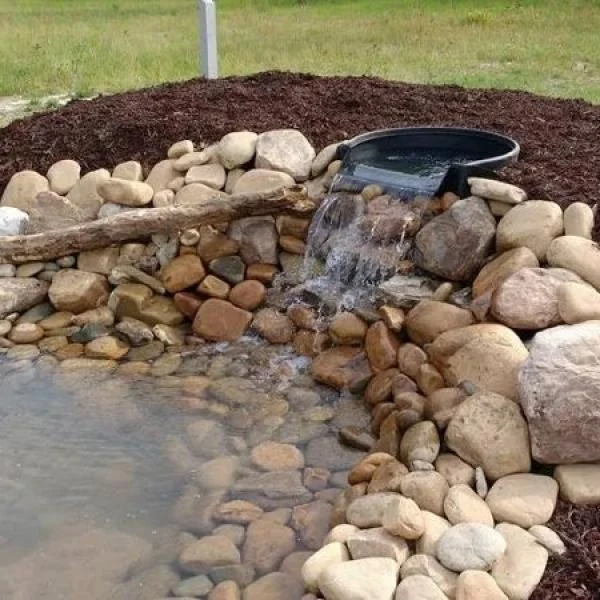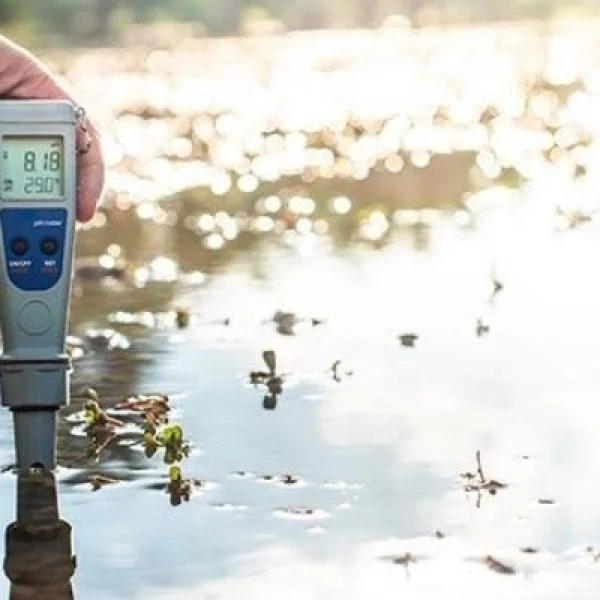
When it comes to maintaining a thriving pond ecosystem, one of the most critical factors to consider is the pH level of the water. The pH in pond water plays a crucial role in the health and well-being of aquatic life, including fish, plants, and beneficial bacteria. In this comprehensive guide, we'll explore the importance of pH in ponds, factors that influence it, and how to maintain optimal levels for a flourishing aquatic environment.
What is pH and Why Does it Matter in Ponds?
pH is a measure of how acidic or alkaline a substance is, based on a scale from 0 to 14. A pH of 7 indicates a neutral solution, whereas values below 7 signify acidic solutions, and those above 7 are alkaline. In the context of ponds, the ideal pH range is typically between 6.5 and 8.5, with many pond experts recommending a slightly alkaline pH of 7.5 to 8.5 for optimal fish health.
The importance of maintaining the correct pH in pond water cannot be overstated. Here's why:
- Fish Health: Most pond fish, including popular species like koi and goldfish, have an average blood pH of 7.4. The closer the pond water pH is to this value, the less stress the fish experience in maintaining their internal pH balance.
- Ecosystem Balance: The pH level affects the growth and survival of beneficial bacteria, algae, and aquatic plants, all of which contribute to a balanced ecosystem.
- Nutrient Availability: The pH level influences the solubility and availability of nutrients and minerals in the water, which are essential for plant growth and fish health.
- Toxicity Control: Extreme pH levels can increase the toxicity of certain compounds in the water, potentially harming aquatic life.
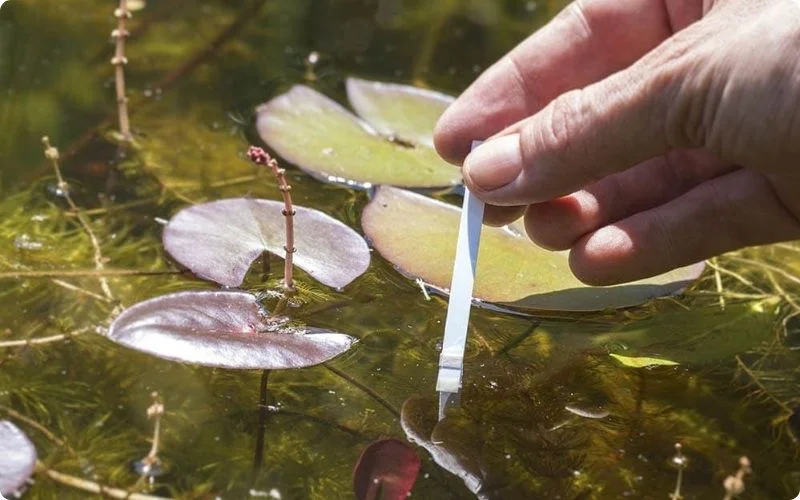
Maintaining the correct pH in pond water
Factors Influencing pH in Pond Water
Several factors can affect the pH in pond water:
1. Rainwater Runoff
Rainwater, especially in areas affected by acid rain, can introduce acidic water into your pond, potentially lowering the pH.
2. Breakdown of organic matter
As organic matter breaks down, it releases carbon dioxide, which can form carbonic acid and lower the water's pH.
3. Algal Blooms
Excessive algae growth can cause pH fluctuations, typically raising pH levels during the day due to photosynthesis and lowering them at night.
4. Overstocking Fish
Too many fish in a pond can lead to increased carbon dioxide levels from respiration, potentially lowering the pH.
5. Limestone and Concrete
Pond features made of limestone or concrete can gradually increase water alkalinity, raising the pH over time.
6. Chemical Treatments
Some pond treatments and medications can affect pH levels, so it's essential to check product labels and monitor pH when using these products.
7. Tap Water
The pH of tap water used for water changes can vary, potentially impacting your pond's overall pH balance.
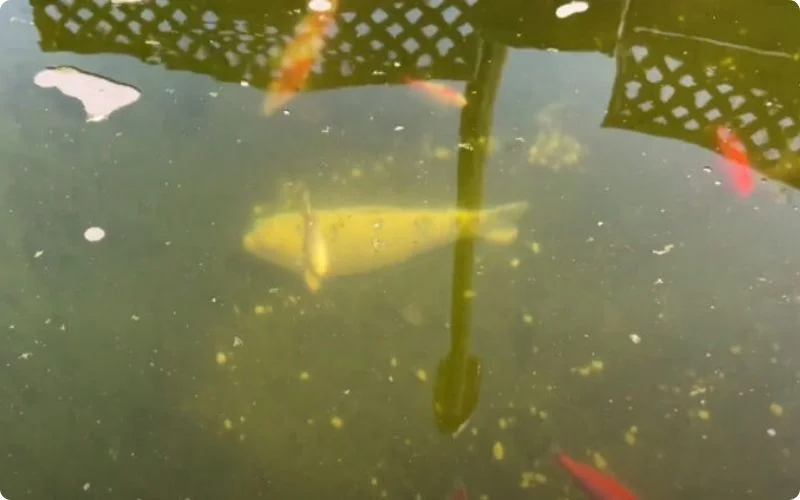
Factors can affect the pH level in your pond
The Dangers of High pH in Ponds
While a slightly alkaline environment is generally beneficial for most pond ecosystems, excessively high pH levels can pose serious risks to aquatic life. Understanding what causes high pH in ponds and its effects is crucial for maintaining a healthy aquatic environment.
Causes of High pH in Ponds
- Excessive Algae Growth: During periods of intense sunlight, algae can rapidly consume carbon dioxide through photosynthesis, leading to a rise in pH levels.
- Limestone or Concrete Features: Ponds with limestone rocks or concrete structures can experience gradual increases in pH as these materials leach minerals into the water.
- Improper Use of Alkaline Chemicals: Overuse of pH-raising products or water treatments can inadvertently push pH levels too high.
- Low Carbon Dioxide Levels: A lack of CO2 in the water, often due to poor circulation or excessive aeration, can result in elevated pH.
Effects of High pH on Pond Life
- Fish Stress: High pH in ponds can damage fish gills and skin, leading to respiratory problems and increased susceptibility to disease.
- Ammonia Toxicity: As pH rises, ammonia in the water becomes more toxic to fish and other aquatic organisms.
- Nutrient Imbalance: Elevated pH can make certain nutrients less available to plants, potentially leading to deficiencies and poor growth.
- Algae Blooms: Some types of algae thrive in high pH environments, potentially leading to problematic blooms.
How to Lower pH in Ponds
If you find that pH in your pond is consistently high, there are several methods you can employ to bring it down to a more suitable level:
- Partial Water Changes: Gradually replace a portion of the pond water with fresh, dechlorinated water that has a lower pH.
- Add Peat Moss: Introducing peat moss to your pond filter or directly into the water can naturally lower pH over time.
- Use pH-Lowering Products: Commercial products designed specifically for lowering pond pH are available and can be effective when used as directed.
- Increase CO2 Levels: Adding a CO2 injection system can help lower pH, but this method requires careful monitoring and is more commonly used in planted aquariums.
- Remove Excess Algae: Regular algae removal can help prevent pH spikes caused by photosynthetic activity.
- Add Shade: Reducing direct sunlight on your pond can help control algae growth and stabilize pH levels.
Keeping the pH level of your pond at the optimal level
To keep your pond's pH within the ideal range of 6.5 to 8.5, consider the following practices:
- Regular Testing: Use a reliable pH testing kit to monitor your pond's pH levels at least weekly, or more frequently during periods of change or stress.
- Gradual Adjustments: When correcting pH, make small, incremental changes over time to avoid shocking pond inhabitants.
- Buffer the Water: Maintain adequate levels of carbonate hardness (KH) to help stabilize pH and prevent rapid fluctuations.
- Proper Filtration: Ensure your pond has an efficient filtration system to remove excess organic matter and maintain water quality.
- Balanced Feeding: Avoid overfeeding fish, as uneaten food can decompose and affect water chemistry.
- Plant Management: Maintain a healthy balance of aquatic plants, which can help stabilize pH through natural processes.
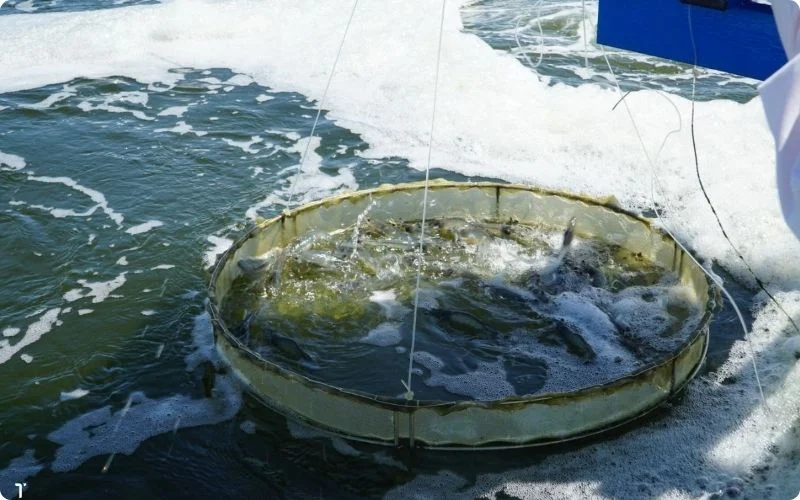
Keeping the pH level of your pond at the optimal level
Conclusion
Understanding and managing pH in pond water is essential for creating a thriving aquatic ecosystem. By regularly monitoring pH levels, identifying factors that influence pH in your specific pond environment, and taking appropriate action to maintain optimal levels, you can ensure the health and vitality of your pond's inhabitants.
Remember, a stable pH between 6.5 and 8.5 is key to supporting diverse pond life, from fish and plants to beneficial bacteria. With proper care and attention to water chemistry, your pond can become a balanced, beautiful, and thriving aquatic haven.
Related Articles
Understanding Dissolved Oxygen: A Vital Component of Aquatic Ecosystems
Dissolved oxygen (DO) is a crucial element in aquatic ecosystems, playing a fundamental role in ...
Everything About Ozone Pool Systems Need to Know
Ozone plays an important role in protecting us from the sun, but did you know it can also protect ...
Why Pool Water pH Important and How to Maintain It
Maintaining the correct pool water pH level is crucial for the safety of swimmers, the longevity of ...
Pond Filtration 101: Essential Tips for a Thriving Aquatic Environment
Creating a serene pond environment in your backyard can be a rewarding experience. Imagine fish ...
Beyond the Surface: A Deep Dive into Water Parameters
Water quality is a crucial aspect of environmental science, public health, and various industries. ...
Weathering the Storm: Protecting Your Pool After Rain
Rain can be a refreshing change from scorching summer days, but it can also wreak havoc on your ...




